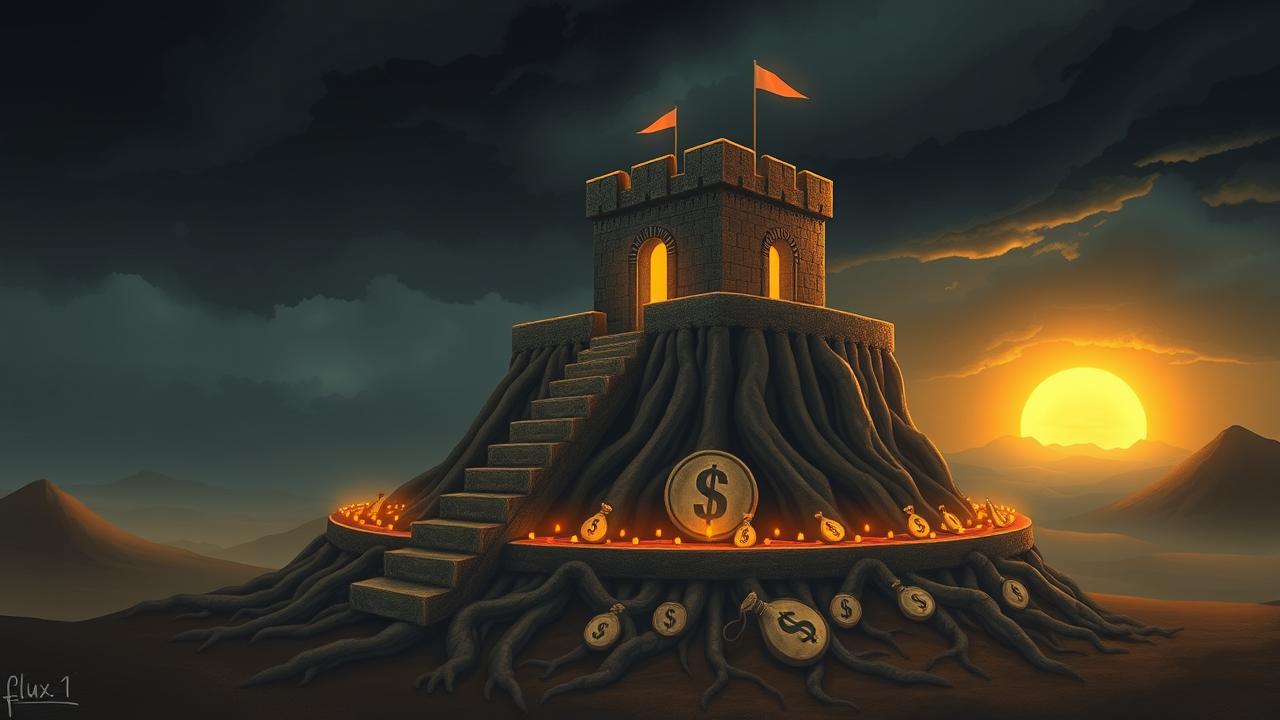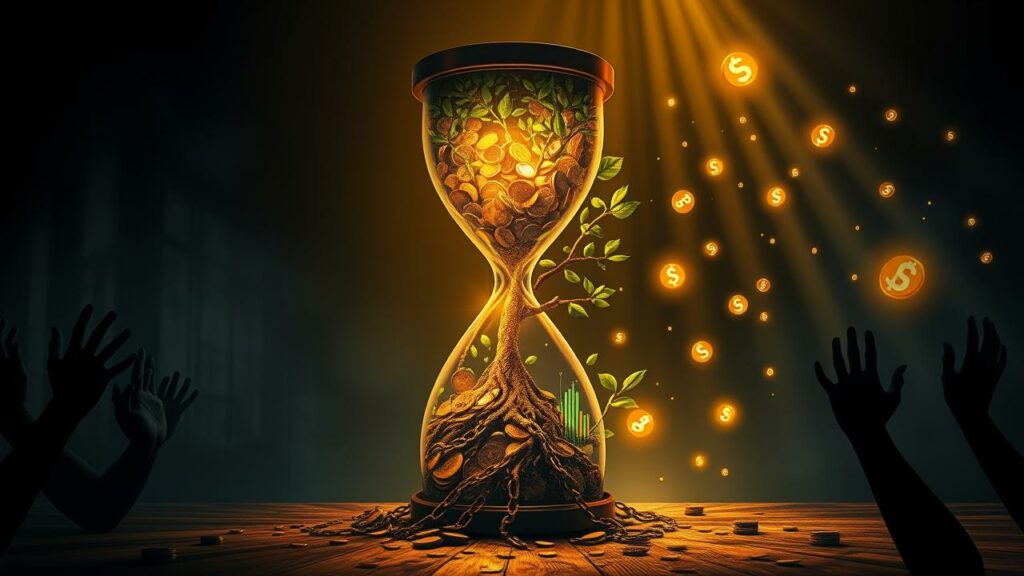The Echo in an Empty Wallet: Reclaiming Your Power
That hollow feeling, the one that gnaws when the account balance glares back like a disappointed god? It’s not just about numbers. It’s the ghost of choices made in haste, the whisper of desires mistaken for needs. We’ve all been there, standing at the checkout, a fog of want obscuring the clear light of what truly matters. These mindful spending exercises are not about restriction; they are the keys to unlocking a vault of inner strength, a rebellion against the mindless drift that bleeds your future dry. Prepare to meet the architect of your financial destiny: you.
Beyond the Ledger: A Glimpse of Conscious Wealth
Forget the dusty spreadsheets that only track the past. This journey plunges into the vibrant present, forging a new path where every dollar spent is a conscious decision, a step towards a life aligned with your deepest values. You’ll learn to dissect the “why” behind your buys, tame the emotional spending beast, and cultivate a radical awareness that turns financial anxiety into empowered action. This isn’t just about saving money; it’s about saving yourself.
The Glare of the Receipt: Awakening to Your Financial Pulse
The fluorescent hum of the big box store always seemed to amplify the chaos in Sutton’s head. A gifted but perpetually stressed video game sound designer, his apartment, a shrine to the latest audio gear and half-eaten gourmet takeout containers, felt more like a beautifully curated prison. Each new gadget, each delivery app siren song, was a fleeting hit against a backdrop of mounting credit card statements. He knew, on some intellectual level, that his spending was a frantic tap-dance away from disaster, but the awareness hadn’t sunk into his bones. Not yet.
It was a Tuesday, the kind where the city’s grime felt personal, that the shift began. A rejected debit card for a morning coffee – a small, insignificant purchase – was the tiny pebble that started the avalanche. The embarrassment wasn’t the sting; it was the sudden, cold clarity. He saw, not his bank balance, but a montage of late-night impulse buys, upgrades he didn’t need, food he barely tasted. It was the stark realization that his money was controlling him, a puppet master pulling strings of desire and distraction. That coffee, unbought, became the most valuable drink he never had. The power of awareness isn’t a gentle nudge; often, it’s a bucket of ice water to the face, shocking you awake to the reality of your habits.
Recognizing the patterns, the triggers, the subtle emotional currents that guide your hand to your wallet – this is the genesis of change. It’s about transforming from a passenger, white-knuckling it through your financial life, to the pilot, course-correcting with intention. It’s about asking, “Why this? Why now?” before the beep of the card reader seals another unconscious deal.
Forging the Tools: Practical Drills for Intentional Spending
Awareness is the spark, but action fans it into a flame. These aren’t penances; they are liberation practices, each one a step away from the gnawing anxiety of unconscious spending.
- The 24-Hour Gauntlet: Eyeing that shiny new thing? Don’t just walk away. Quarantine it. Put it on a mental (or actual) list and forbid yourself from purchasing it for a full 24 hours. Often, the burning “need” extinguishes itself when confronted with the cool light of a new day. It’s amazing how many “must-haves” become “meh-maybes” with a little T.L.C. – Time, Logic, and Consideration.
- The Autopsy of a Purchase: After every non-essential buy, perform a quick post-mortem. What emotion drove it? Boredom? Stress? A desire to keep up with the digital Joneses? Jot it down. Recognizing the emotional puppeteers is the first step to cutting their strings.
- Cash, Cold and Hard: There’s a primal connection to physical money that cards sever. For a week, try using only cash for discretionary spending. Watching those bills dwindle gives a visceral feedback loop that a tap-and-go transaction conveniently bypasses. It’s like your wallet is screaming, “Are you SURE about this?” – and sometimes, you need to hear it.
- The Gratitude Audit: Before you buy something new, take inventory of what you already possess. Actively appreciate three things you own that serve a similar purpose or bring you joy. This isn’t about deprivation; it’s about recognizing abundance. Sometimes, the richest person isn’t the one with the most, but the one who wants the least.
These aren’t just abstract notions; they are gritty, in-the-trenches tactics to rewire your brain and reclaim your financial agency. Embrace the discomfort. It’s the sound of growth.
Visualizing Victory: Getting Started on the Path
Sometimes, seeing is believing, or at least, understanding. The journey to mindful spending is deeply personal, yet shared principles light the way. The following video from U.S. Bank offers a concise, practical overview of how to begin this transformative practice, touching on core concepts that can help you lay a solid foundation. It’s a quick hit of insight, a visual nudge to get those gears turning. Absorb its message, not as gospel, but as another tool in your ever-expanding arsenal of financial self-mastery.
The Compass of Purpose: Aligning Your Spending with What Truly Burns Within
The scent of saltwater and pluff mud was Selah’s sanctuary, a world away from the sterile grant proposal meetings that increasingly defined her days as a marine biologist. She championed ocean conservation with a fierce, quiet passion, yet her bank statements told a different story – a scattershot of convenience purchases, fast fashion fixes for fleeting social events, and subscriptions she barely used. The dissonance was a dull ache, a feeling that her life’s resources were leaking away, unaligned with the vibrant coral reefs she fought to protect.
It wasn’t that she lacked goals. Her deepest yearning was to fund a small, local initiative to combat plastic pollution. But that dream felt perpetually distant, obscured by the daily drizzle of mindless expenditures. The turning point came during a beach cleanup, watching volunteers, many with far less income than her, dedicate their precious weekend hours. The realization hit her like a rogue wave: her spending didn’t reflect her heart. This began her dive into a rigorous practice of core values and money alignment. She didn’t just make a budget; she crafted a “values-based spending plan.” Each potential purchase was filtered through a new lens: “Does this nourish my core purpose, or does it distract from it?”
Suddenly, the expensive lattes seemed less appealing when weighed against a donation to her plastic cleanup fund. The trendy outfits faded in importance compared to investing in durable, ethically sourced gear for her field work. This isn’t about asceticism; it’s about joyful allocation. When your spending becomes an extension of your deepest beliefs, every transaction, no matter how small, feels resonant and powerful. It’s the difference between scattering seeds in a gale and planting them with precision in fertile soil.
Navigating the Storm: Staying Conscious When Emotions Run High
The human heart is a tempestuous sea, and our wallets are often the first lifeboats we cling to when the emotional waves crash. Stress from a brutal workday? Retail therapy. A pang of loneliness? That new streaming service, promising endless distraction. A flicker of inadequacy? Perhaps that ludicrously priced “aspirational” item will fill the void. Oh, the seductive lies we tell ourselves.
Recognizing these emotional triggers is like identifying the currents that pull you off course. It requires a brutal honesty, a willingness to look into the darker corners of your motivations. Did you really need that third pair of identical black shoes, or were you feeling unseen? Was that elaborate dinner out about the food, or an attempt to buy a feeling of connection? One powerful exercise is the “HALT” check before any non-essential purchase: Am I Hungry, Angry, Lonely, or Tired? If the answer is yes to any of these, delay the purchase. Address the underlying emotion first. Often, a walk, a conversation with a friend, or even a good nap can diffuse the urge to spend far more effectively (and cheaply) than a shopping spree.
This isn’t about suppressing emotion. It’s about understanding its power and refusing to let it dictate your financial choices. It’s about learning to ride the waves instead of being capsized by them. Some find that learning how to reframe money beliefs that are tied to these emotional spending patterns can be incredibly liberating, turning moments of vulnerability into opportunities for conscious choice.
The Alchemy of Abundance: Gratitude, Belief, and Crafting Your Financial Reality
The drone of the television was Creed’s constant companion, a fuzzy soundtrack to the empty expanse of his retirement. After decades crisscrossing the country as a long-haul trucker, the sudden stillness of home felt like a cage. His days, once filled with the rumble of the engine and the camaraderie of truck stops, now revolved around the siren call of late-night infomercials and the endless scroll of online marketplaces. The packages arrived like clockwork, small bursts of novelty that faded almost instantly, leaving behind a residue of debt and a quiet, simmering tension with his wife, Rosalie, who watched their savings dwindle with a growing sense of alarm.
Creed wasn’t ignorant; he knew he was “doom spending,” filling a void with things. The shame was a heavy cloak. He’d tried budgeting apps, stern lectures to himself, but the pull was too strong, a deep-seated belief that he “deserved” these comforts after a life of hard work, a belief that perversely fueled his unhappiness. His journey into mindful spending was not a straight line. It was a series of false starts, of two steps forward and one giant leap back into the familiar abyss of impulse. What began to shift things, slowly, painfully, was not another spreadsheet, but the introduction to gratitude exercises for money mindset. It felt foolish at first, listing things he was thankful for when all he felt was the pinch of his poor choices. But Rosalie, bless her patient soul, gently encouraged him. He started small: the taste of his morning coffee, the warmth of the sun on his porch, the fact that his old rig, now parked, still gleamed when he washed it.
This practice, combined with simple money mindset exercises, began to subtly alter his perspective. He started a “wins” jar, not for money saved, but for urges resisted. He began to explore money mindset visualization practice, imagining a future where financial peace brought him genuine contentment, not just fleeting distractions. It was, and still is, a struggle. There are days the old ghosts rise. But the shift in his money mindset is palpable. He’s learning that true abundance isn’t about what you can acquire, but what you can appreciate. These mindful spending exercises, for Creed, became less about restriction and more about rediscovering the richness already present in his life, a wealth no shopping spree could ever buy. He even started tinkering with his old truck, finding joy in the familiar grease and steel, a satisfaction far deeper than any click-to-buy thrill.
Arming Yourself: Gadgets and Guides for the Conscious Spender
While the core of mindful spending is internal, the right tools can be powerful allies, not crutches. Think of them as well-crafted instruments, amplifying your awareness rather than replacing it. Many find that a dedicated budgeting app, one that allows for easy expense tracking and categorization, helps illuminate where the money actually goes, which, let’s be honest, is often a shocking revelation. Look for apps that offer visual reports; sometimes a pie chart speaks louder than a column of numbers.
Beyond apps, consider a good old-fashioned spending audit worksheet. Physically writing down your expenses, reflecting on their necessity, and categorizing them by value can be a profoundly centering exercise. And don’t underestimate the power of automated savings tools that whisk a predetermined amount into a separate account before you even see it – the “pay yourself first” principle is a cornerstone of building financial resilience, almost like a Jedi mind trick on your own impulsiveness. The goal isn’t to find a magic bullet, but a system that resonates with your wiring and supports your journey towards intentionality.
Expanding the Mind: Literary Companions on Your Financial Quest
For those who find solace and strategy in the written word, several authors offer deep dives into the psychology of money and the art of mindful living. These aren’t your typical dry financial tomies; they’re explorations of the human condition, viewed through the lens of our complex relationship with currency.
- “The Little Book of Zen Money” by Seven Dollar Millionaire: This gem often explores how ancient wisdom can bring a sense of peace and clarity to modern financial anxieties. It’s about simplicity and finding abundance in less, which is a refreshingly contrarian take in our consumer-driven world.
- “Thrive through Financial Mindfulness: Cultivating Growth and Development” by Hoveth Kalthix: This title suggests a proactive approach, focusing on how mindfulness isn’t just about stopping bad habits but actively cultivating a mindset geared for financial growth and personal development. It’s about building, not just defending.
- “Compulsive Spending Masks Emotions: Understanding the Connection Between Spending Addiction and Seeking Happiness amid Emotional Challenges” by Laura Szekely: A potentially powerful read for anyone who suspects their spending is a form of self-medication. It promises to delve into the often-unseen emotional drivers behind financial habits, offering understanding and pathways to healing.
These books offer different angles on the same fundamental truth: your financial life is inextricably linked to your inner world. Arm yourself with knowledge, with insight, with the empowering narratives of those who’ve navigated these waters before you.
Unraveling the Knots: Your Mindful Spending Questions, Illuminated
How do I even start with mindful spending exercises if I’m completely overwhelmed by debt?
The weight of debt can feel like drowning, yes. But even in the deepest water, the first stroke back to shore is still just one stroke. Start small. Don’t try to overhaul everything at once. Pick one, just one, of the simpler mindful spending exercises, like the 24-hour waiting period for non-essential purchases. The very act of choosing to engage, even in a tiny way, is a potent antidote to overwhelm. It’s about reclaiming a sliver of control, and those slivers add up. It’s not about instant miracles; it’s about stubborn, persistent shifts in awareness. And perhaps, explore financial goal setting exercises focused on debt reduction as a parallel track; knowing what you’re aiming for can fuel your mindfulness.
Is mindful spending just another word for being cheap? My friends will think I’m no fun.
Ah, the classic conflation. Being “cheap” is often driven by a scarcity mindset, a fear of lack. Mindful spending, conversely, is rooted in an abundance mindset – an abundance of awareness, of choice, of alignment with your values. It’s not about saying “no” to everything; it’s about saying a resounding “YES!” to the things that genuinely enrich your life and a thoughtful “not right now” or “not this” to the things that don’t. As for your friends? True friends will respect your journey. And who knows, your intentionality might even inspire them. It’s about funding your joy, not funding their fleeting expectations. If they can’t handle your evolution, perhaps it’s time to audit your social circle expenses too, eh?
I keep trying, but I always slip back into old habits. What am I doing wrong?
You’re doing something profoundly human: you’re learning. Slipping back isn’t failure; it’s data. Each “slip” is a flare illuminating a trigger, a vulnerability, an old pattern that still has some fight left in it. Instead of self-flagellation (which, let’s be frank, is as useful as a screen door on a submarine), get curious. What was the context? The emotion? The rationalization your clever brain cooked up? This is where money mindset affirmation examples or journaling about these moments can be powerful. The path isn’t linear; it’s a spiral. You revisit old lessons with new understanding. The “wrong” thing would be to give up. The powerful thing is to observe, adjust, and keep stepping forward. Resilience isn’t about never falling; it’s about how you get back up.
Can mindfulness really help with a deep-seated fear of not having enough money?
That fear, that gnawing anxiety about scarcity, often has deep roots. Mindfulness can be a powerful tool here, not by magically making more money appear, but by helping you dissect the fear itself. It allows you to observe the fear without being consumed by it. To ask: Is this fear based on current reality, or is it an echo from the past? What thoughts fuel it? What sensations accompany it? By bringing awareness to the fear, you can begin to loosen its grip. It might also involve practices like gratitude for what you do have, however small, and consciously working on reframing those deep-seated beliefs about money and security. It’s a process, not an instant fix, but profoundly transformative.
Beyond These Pages: Charting Your Own Course
The journey to financial mindfulness is vast and deeply personal. These resources offer further avenues for exploration, beacons on your path to conscious consumption and empowered living:
- Mindful spending: 10 ways to save money and lower stress – Offers practical tips from Calm.com.
- Mindset Matters: How to practice mindful spending – Insights from U.S. Bank on the importance of mindset.
- Mindfulness exercises – General mindfulness practices from the Mayo Clinic that can support financial well-being.
- r/personalfinance – A Reddit community for discussions on all things personal finance, often touching on spending habits.
- r/Mindfulness – A community dedicated to the practice of mindfulness, offering broader context and support.
- How to Manage Your Money: Spend Money Mindfully – A Headspace video on mindful money management.
The Next Choice is Yours: Ignite Your Financial Power
The screen fades, the article ends, but the real work – the magnificent, messy, empowering work – begins now, in the quiet laboratory of your own life. You hold the power to redefine your relationship with money, to transform it from a source of stress into a tool for creation. Don’t wait for a cataclysmic wake-up call. Choose one small act today. Pause before one purchase. Question one assumption. Embrace these mindful spending exercises not as a chore, but as an act of radical self-care and profound empowerment. The path to financial peace isn’t found; it’s forged, one conscious decision at a time. Your future self is already thanking you.







